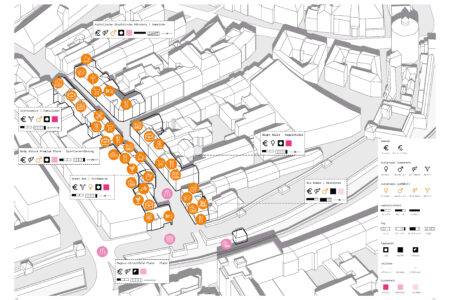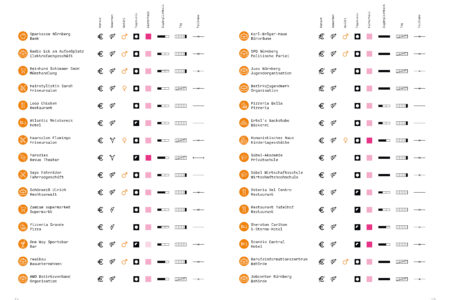Queer Space
Title: Queer Space
Author: Ricarda Oed
Time: Summer Semester 2024
Tutors: Prof. Dr. Richard Woditsch, Xiaotian Li
Thesis: Master’s
Berlin is undoubtedly Germany’s queer stronghold—especially the Rainbow District in Schöneberg. As early as the 1920s, this neighborhood was considered the place-to-be for the queer community, with numerous nightclubs, bars, and venues catering specifically to an audience beyond heteronormativity. At the heart of this scene stood the drag club Eldorado on Motzstraße, a place that welcomed icons like Magnus Hirschfeld, Marlene Dietrich, and Charlie Chaplin. Its slogan, displayed above the entrance—”Hier ists richtig” (This is the right place)—remained visible in public space until around 1933. With the rise of the Nazi regime and the ensuing persecution of homosexuals, Eldorado and its era came to an end. Though the venue never reopened, Berlin has continued to attract queer individuals from around the world, both after World War II and to this day.
The recent documentary Queere Exile Berlin portrays the lives of six queer individuals who sought personal fulfillment and refuge in Germany’s capital. Their diverse realities are interwoven on screen, united by shared hopes and goals: to live in peace, freedom, and acceptance. Yet, the film also exposes the darker side of these aspirations, highlighting the ongoing challenges of societal acceptance and openness. Each person featured in the documentary shares personal experiences of exclusion and discrimination.
Beyond the individuals, the documentary also explores Berlin’s queer landscape, reflecting the dynamic transformation of the scene. Today, a wide range of gender identities, sexualities, and romantic orientations have emerged and established themselves, each with distinct needs and demands—both in relation to the built environment and to society as a whole.






